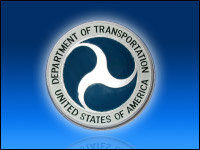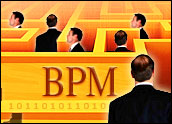
Consider the advantages of joining an airline frequent flier program (FFP): The more you travel, the more points you earn. On the other hand, the more you travel, the more likely your baggage will be lost. Or the airline will still charge a fee for converting frequent flier points into a “free” extra trip. Or the airline will change its policy and impose an expiration date for using your thousands of hard-earned mileage points.
Starting with American Airlines, the industry’s experiment in customer relationship management (CRM) through frequent flier programs (FFPs) has been going on for more than a quarter century. Membership in the popular rewards programs reached 277.4 million in 2009, a gain of 9 percent versus 2007, according to Colloquy, a loyalty program research organization.
To some degree, loyalty programs have become victims of their own success. The expectations of frequent fliers have increased — especially among top program participants. As a result, airlines need to constantly ensure that they keep their frequent customers satisfied.
It appears that the airlines need to concentrate most on two issues related to the FFPs. The first is to address any hardening of the arteries problems that surface as these programs mature. The second is to fully capitalize on the rewards programs as a core element in a more complete CRM program.
In each case, improvements in the use of information technology will be a major key to future success.
From Commodities to Customers
“Virtually all airlines have a rewards program, and some are more robust than others. They work, and they have for some time. But the basic idea has been loyalty, and not so much customer relations,” Dean Headley, associate professor of marketing at Wichita State University and coauthor of the Airline Quality Rating report, told CRM Buyer.
“Actually, prior to 9-11 (Sept. 11, 2001), the airlines didn’t have a lot of regard for customers. It was a commodity business, and they figured there was always one more customer out there,” he added. However, as a result of the downturn in air travel after the 2001 attacks, “the airlines became more sensitive” to customers in order to recover, Headley said.
To a large degree, rewards programs have been viewed by the airlines as extensions of their sales promotion activity — in essence, a permanent sale for a certain class of customer. However, as soon as an FFP is launched, the airlines start accumulating data about customers. Records of names, addresses, origins, destinations, flight frequencies, and how much money a particular passenger spends are suddenly captured by the airline. ZIP codes can generate demographic information regarding income levels and other factors. Multiplied by millions of customers, this information soon becomes a huge database.
The challenge, then, for the airline is to exploit the database with efficient information technology and software tools.
“The advantage of all this data is that you can begin to determine different types of customers and then target your marketing to them. The airlines exploiting this capability can segment different publics. Instead of using a generic newspaper or TV promotion you can use direct mail or e-mail to groups of customers or even individual customers that’s under the radar in terms of your competitors,” Raul Arce, vice president of travel and transportation at IBM, told CRM Buyer.
In general, airlines have not fully capitalized on all the data that is available to them, Arce said. The travel sector tends to separate customers into two groups — businesspeople and vacationers — whereas there are far more segments that could be addressed with targeted marketing, utilizing IT tools, he contended.
“When airlines look at the business in a commodity perspective, they become driven by cost. They try to cut to the bone, and that leads to cutbacks in staff and services, like reducing call center personnel or gate agents. But there is technology available to cut across all the customer touch points and to improve the customer experience and that drives loyalty,” he added.
An example he cites: A frequent passenger incurs a lost baggage incident. On a subsequent flight the incident shows up when the gate agent views the customer’s record at check-in. To compensate for the past lost bag experience, the agent could waive the baggage fee for the current flight and improve relations with the customer. Those types of activities go beyond the FFP and begin to form the basis for a true CRM program.
Leveraging the Best Customers
One advantage of properly segmenting and analyzing customer data is that it can reveal an airline’s best customers.
“The airlines can use their database to shift from just finding out who the frequent fliers are to determining the most valuable customers in terms of high spenders and low spenders,” Evert de Boer, senior director of the global airline practice at Carlson Marketing Group, told CRM Buyer.
Research sponsored jointly by Carlson and Peppers & Rogers indicated that 85 percent of the best frequent fliers feel that rewards programs are a very important factor in choosing a carrier. For these fliers, not all the features of a loyalty program are equally attractive. The ease of converting earned miles for additional trips or related travel benefits, free admission to the airline lounge, and clarity of rules governing the programs rank high in this group. Of far less importance is the ability to redeem miles for non-travel benefits such as merchandise and gaining points for non-airline activities such as car rentals.
The research found gaps in the ability of the airlines to adequately provide the features elite travelers value the most. For example, the benefit of having seats available for award-eligible travel is highly desirable but poorly delivered upon. “Matching a competitive offering to the factors that drive loyalty among an airline’s best customers is a skill few airlines have mastered,” de Boer said.
Instead of running a one-size-fits-all FFP, airlines should maintain a good program for their “base” frequent fliers while providing a superior program for their best customers. The elite programs must take advantage of technology to identify and analyze the high value group of customers and better engage these passengers through Web sites, social networking and other channels.
Better Programs Yield More Business
In addition, customer information should be available along all the touch points, including call centers, and ticket agents. The use of IT can go a long way to stretch the resources of airline personnel as they interact with passengers. Both IBM’s Arce and Carlson’s de Boer agree that technology has to be matched with human interactions between airline personnel and customers.
The research indicated that actions supporting elite frequent fliers can have a huge payoff. For example, 95 percent of elite passengers who rated an airline’s FFP as “excellent” said they would maintain or increase their business with that airline, while only 41 percent of passengers who rated an FFP as “poor” would be inclined to maintain or increase business. In a “share of wallet” comparison, 96 percent of those passengers who rated a program as excellent would maintain or increase business while just 54 percent would do so if they rated the program as poor.
Airlines who fail to cater to their best customers will do so at their peril. In the report, Luc Bondar, Carlson’s global vice president for loyalty programs, said the research indicated “a solid business case for investments to improve the experience of elite members of an airline’s loyalty program.”














































